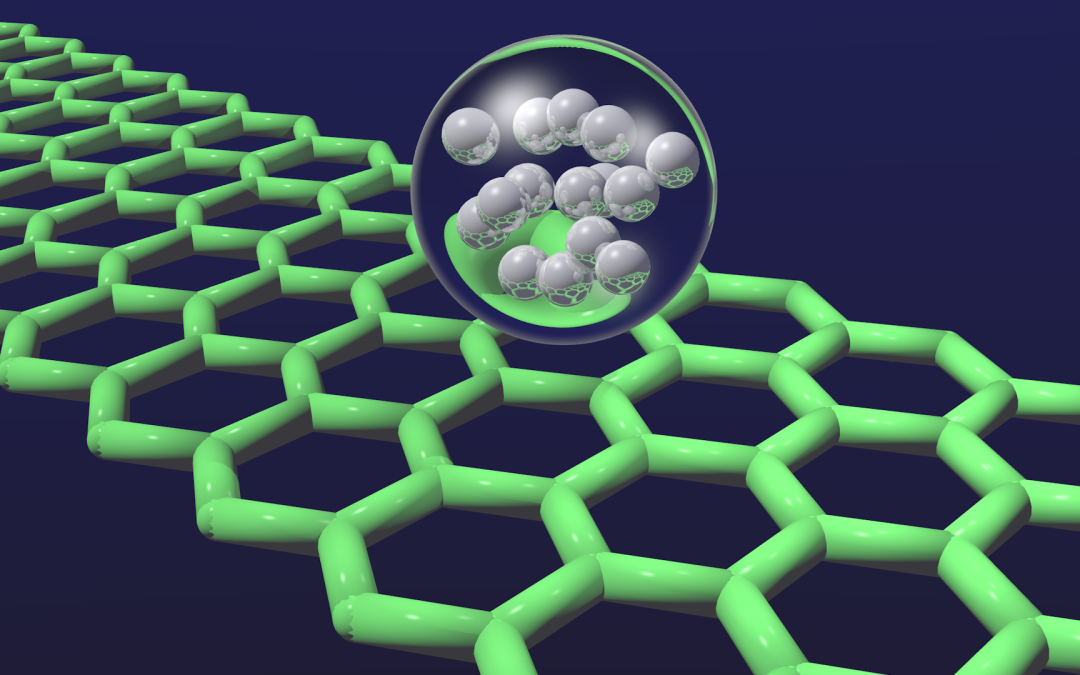Since its discovery in 2004, graphene’s reputation as the hottest nanomaterial on the block has extended far beyond science labs. With over 25,000 patents filed for potential applications, graphene is poised to revolutionize several industries that directly affect our day to day lives.
Stronger than diamond and thinner than a sheet of paper, graphene is a single atom thick hexagonal layer of graphite. To add to its street cred, graphene can carry 1,000 times more electricity than copper, has a flexible structure that allows for strength without rigidity, and can dissipate heat like nobody’s business. Because of its unique physicochemical properties and high surface-to-volume ratio, graphene is uniquely positioned to lead the charge on a number of promising medical breakthroughs.
1. Sensitive Prosthetics
At the University of Glasgow, a research team led by Dr. Ravinder Dahiya recently found a way to cut graphene production costs by 100x, and in the process, realized that the nanomaterial could radically improve prosthetic limbs. Whereas today’s prosthetics are made of carbon fiber composites, Dr. Dahiya believes that using graphene could provide an ultra-flexible, conductive skin-like surface that could allow for sensation to be conveyed through prosthetics for the first time.
2. Faster Gene Sequencing
Successful simulations from the National Institute of Standards and Technology (NIST) have demonstrated how graphene could improve gene sequencing to make it significantly more accurate and rapid than today’s chemical process. The method involves nanopore sequencing, in which a single DNA molecule gets pulled through a tiny, chemically active hole in a super thin sheet of graphene, allowing changes in electrical current to be detected.
This method suggests that about 66 billion bases—the smallest units of genetic info—could be identified in just one second through this method. Even more impressive, the study has found the results to be 90% accurate with no false positives. If the simulation proves as effective in experiments, this could be a huge breakthrough in several fields that utilize genetic information, including forensics.
3. Banishing Bacteria
New research from the Catholic University of the Sacred Heart and the Institute for Complex Systems in Rome has found graphene oxide to be capable of decreasing infections spread from medical tools to patients. Coating medical tools with this carbon-based compound could greatly decrease the prevalence of at least three common post-surgery infections, thereby reducing the need for antibiotics. Graphene oxide has been found to have amazing antibacterial properties, effectively wrapping around the bacteria, puncturing its membrane, and ensuring that it can’t reproduce once inside the human body.
This novel method of blocking bacteria would be more environmentally-friendly than current methods, and also safer: unlike drug based antimicrobial therapy, graphene is just carbon—a building block of life—and therefore its cytotoxicity on human cells is very low. In other words, graphene is about to become the world’s smallest medical superhero, banishing microscopic bad guys that lurk on “clean” medical tools.
4. Building Better Brains
Researchers at the University of Trieste in Italy and the Cambridge Graphene Centre have demonstrated how graphene could be used to make electrodes that could be safely implanted in the brain to treat various medical conditions. These electrodes would interface with nerve cells without damaging the cells’ integrity. Central to graphene’s appeal in medical applications is its amazing properties of conductivity, making it a natural winner for electrodes.
Successful implantation of graphene based electrodes in the brain could lead to new breakthroughs in restoring sensory function to amputee and paralysed patients, and could provide new hope for patients with chronic conditions such as Parkinson’s disease. Tungsten and silicon based electrodes lose conductivity over time, as scar tissue grows over the device and alters the signal. Graphene, however, remains highly biocompatible, even with scar tissue regrowth. In other words, graphene is about to help doctor’s build better, more responsive brains.
Photo Credit: Flickr/UCL Mathematical and Physical Sciences

